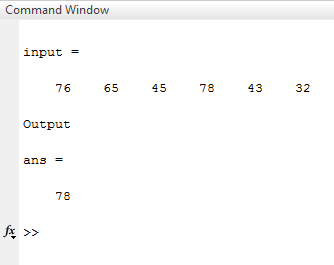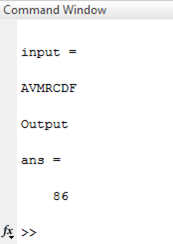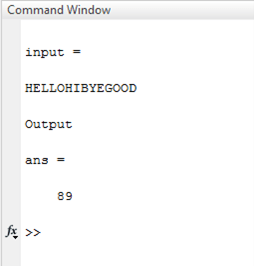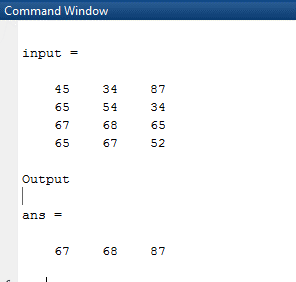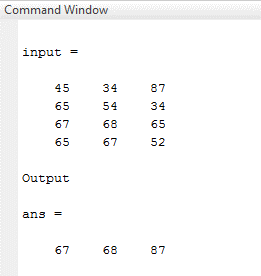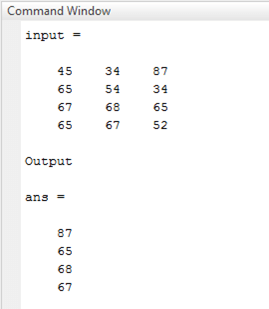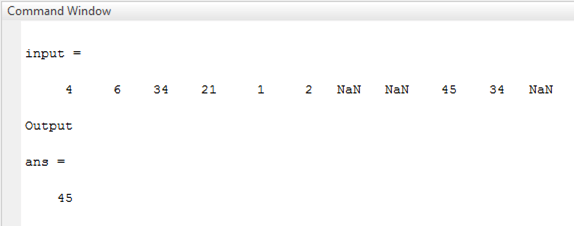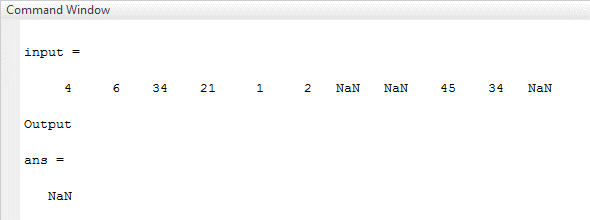Updated March 8, 2023
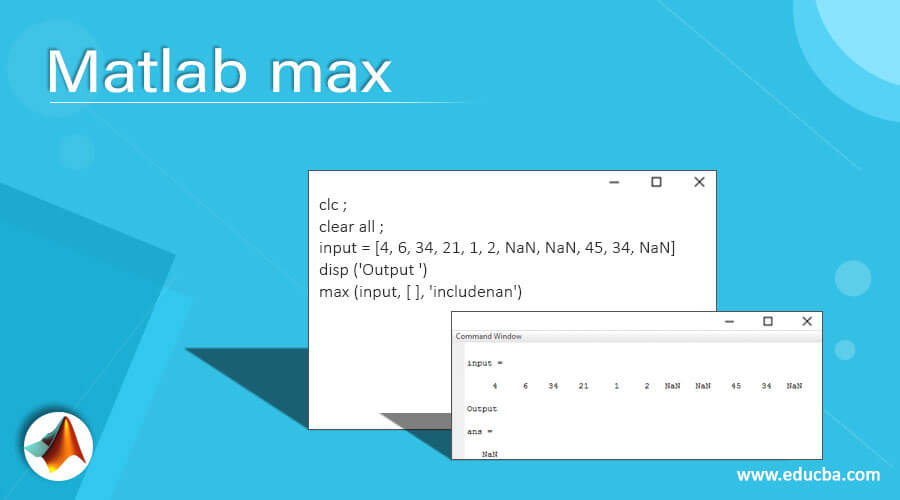
Introduction to Matlab max
In Matlab ‘max’ function is used to find or calculate the maximum element from a given database. It compares all the values in integers and returns the maximum value. Max function supports single dimensional datasets as well as multidimensional datasets. It also performs on all data – types like integers, floating numbers, characters, complex numbers, and strings. If the dataset is having null values, then there are different methods to consider such values. It has various options like ‘omitnan’, ’includenan’, dim’, ’nanflag’, etc.
Syntax
- max( Input variable name )
min ( Input )
- max ( input variable name , [ ] , dimensions )
max ( Input , [ ] , 1 ) , max ( input , [ ] , 2 )
- max ( input variable name , [ ] , ‘ includenan ’ )
max ( Input , [ ] , ‘ includenan ’ )
- max ( input variable name , [ ] , ’ omitnan ’ )
min ( Input , [ ] , ‘ omitnan ’ )
How does max function work in Matlab?
Max function performs on series of elements, if the dataset is one dimensional in the form of vectors or array, then it is simple to calculate maximum elements, but if the dataset is multidimensional and large elements are present in the dataset, then it is a complicated process. This function calculates the maximum value individually on each row and each column. The maximum of characters and strings is calculated based on the ASCII value of all elements.
Examples
Here are the following examples mention below
Example #1
Let us consider one array of integer elements 76, 65, 45, 78, 43, 32, which is declared as input. All the elements are integers; therefore max function will give 78 as output, which is illustrated in example 1(a).In example 1(b) ,input data is in form of characters like ‘A’,’V’,’M’,’R’,’C’,’D’,’F’. min function will find out ascii values first, and then it will calculate the maximum value. Therefore the smallest value maximum value is 86. And if the dataset is an array of strings, the string is an array of characters; therefore in strings, also max function performs like characters only. In example 1(c ), input is ‘HELLO’, ‘HI’, ‘BYE’, ‘GOOD’. This function will consider the first letter of each letter, and by comparing all the first letters, we will get 89 as output which is the ascii value of character ‘Y’.
Matlab code for Example 1(a):
clc ;
clear all;
input = [76, 65, 45, 78 , 43, 32]
disp ('Output ')
max (input)
Output:
Matlab code for Example 1(b):
clc ;
clear all ;
input = [ 'A', 'V', 'M', 'R', 'C', 'D', 'F' ]
disp ('Output ')
max (input)
Output:
Matlab code for Example 1(c ):
clc ;
clear all ;
input = [ 'HELLO', 'HI', 'BYE', 'GOOD' ]
disp ('Output ')
max (input)
Output:
Example #2
Let us consider one example with a multidimensional database. In example 2(a), input has three columns and four rows; if we apply the max function on input, we will get three values as output. These three values are the maximum elements of each column. We can also instruct the dimensionality of the matrix. If we want maximum values concerning columns, then the ‘1’ dimension is used, which is illustrated in Example 2(b), and if we want maximum value concerning rows, then the ‘2’ dimension is used, which is illustrated in example 2(c).
Matlab code for Example 2 ( a ):
clc;
clear all;
input = [45 ,34, 87 ; 65, 54, 34 ; 67, 68, 65 ; 65, 67, 5 2 ]
disp ('Output ')
max (input)
Output:
Matlab code for Example 2 (b):
clc;
clear all;
input = [45 , 34, 87 ; 65, 54, 34 ; 67, 68, 65 ; 65, 67, 52 ]
disp ('Output ')
max (input, [ ] , 1 )
Output:
Matlab code for Example 2(c):
clc;
clear all;
input = [45 ,34, 87 ; 65, 54, 34 ; 67, 68, 65 ; 65, 67, 52 ]
disp ('Output ')
max ( input, [ ] , 2)
Output:
Example #3
If some values are missing or some values are Null in a database, then there is one way to perform on such databases. Nan represents null values. If there are NaN values in the database and we apply the min function without any instruction, then automatically, it will ignore the NaN values. There are two ways in max function. One is omitnan, and the second is includenan. ‘Omitnan’ will ignore NaN values, and ‘Includenan’ will consider NaN values. In example 3(a), ‘omitnan’ is used; this will ignore all Nan values and compare other values. And in example 3(b), includenan function is used, which will include the presence of Nan value and directly give output as Nan by considering Nan is the maximum element.
Matlab code for Example 3(a):
clc ;
clear all ;
input = [4, 6, 34, 21, 1, 2, NaN, NaN, 45, 3 4, NaN]
disp ('Output ')
max (input, [ ], 'omitnan')
Output:
Matlab code for Example 3(b):
clc ;
clear all ;
input = [4, 6, 34, 21, 1, 2, NaN, NaN, 45, 34, NaN]
disp ('Output ')
max (input, [ ], 'includenan')
Output:
Conclusion
In this article, we have seen the ‘max’ function. This function compares all elements from the database and finds the maximum value from the database. There is no limitation of dimensionality of the dataset to use this operation. Along with all types of datasets, it also works on all data – types like integers, floating numbers, complex numbers, characters, and strings.
Recommended Articles
This is a guide to Matlab max. Here we discuss How does max function works in Matlab and examples along with the codes and outputs. You may also look at the following articles to learn more –
